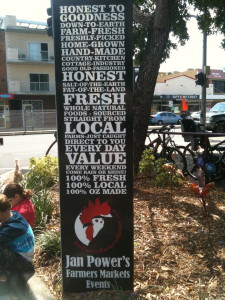Nothing makes Americans buy a food product quite like the fabulously ambiguous word “natural.”
 The top 35 health claims and food labels include words most anyone who has been to a supermarket in the past five years should recognize—ones like “natural,” yes, but also “organic,” and “fat free,” and “carb conscious,” and “100 calories.” These phrases helped the food industry sell more than $377 billion worth of masterfully marketed food items in the United States during the past year, according to data from market research firm Nielsen.
The top 35 health claims and food labels include words most anyone who has been to a supermarket in the past five years should recognize—ones like “natural,” yes, but also “organic,” and “fat free,” and “carb conscious,” and “100 calories.” These phrases helped the food industry sell more than $377 billion worth of masterfully marketed food items in the United States during the past year, according to data from market research firm Nielsen.
The list of lucrative food labels is long, and, at times, upsetting.
Many of these labels are pasted onto food packages for good reason. It’s imperative, after all, that consumers with celiac disease be able to tell which food items are gluten free, or that those with milk allergies be able to tell which are made without lactose.
But some are utterly meaningless. Take food labeled with the word “natural,” for instance. Actually, remember it, because it’s probably the most egregious example on supermarket shelves today. The food industry now sells almost $41 billion worth of food each year labeled with the word “natural,” according to data from Nielsen. And the “natural” means, well, nothing. The US Food and Drug Administration (FDA) doesn’t even have an official definition or delineation of what “natural” actually means. The only thing the FDA has regarding the word is this statement, on its website:
From a food science perspective, it is difficult to define a food product that is ‘natural’ because the food has probably been processed and is no longer the product of the earth. That said, FDA has not developed a definition for use of the term natural or its derivatives. However, the agency has not objected to the use of the term if the food does not contain added color, artificial flavors, or synthetic substances.
 It’s hardly the only misleading adjective the food industry is swinging around these days. The word organic, while a bit less nebulous, still means a good deal less than one might think. Several others, including ones that reference antioxidants, proteins, calcium and other vitamins and minerals, are confusing consumers by tricking them into believing certain food products are healthier than they actually are, a recent study found. And the trend is only likely to get worse. Many of the top grossing food labels are still growing—and fast.
It’s hardly the only misleading adjective the food industry is swinging around these days. The word organic, while a bit less nebulous, still means a good deal less than one might think. Several others, including ones that reference antioxidants, proteins, calcium and other vitamins and minerals, are confusing consumers by tricking them into believing certain food products are healthier than they actually are, a recent study found. And the trend is only likely to get worse. Many of the top grossing food labels are still growing—and fast.
